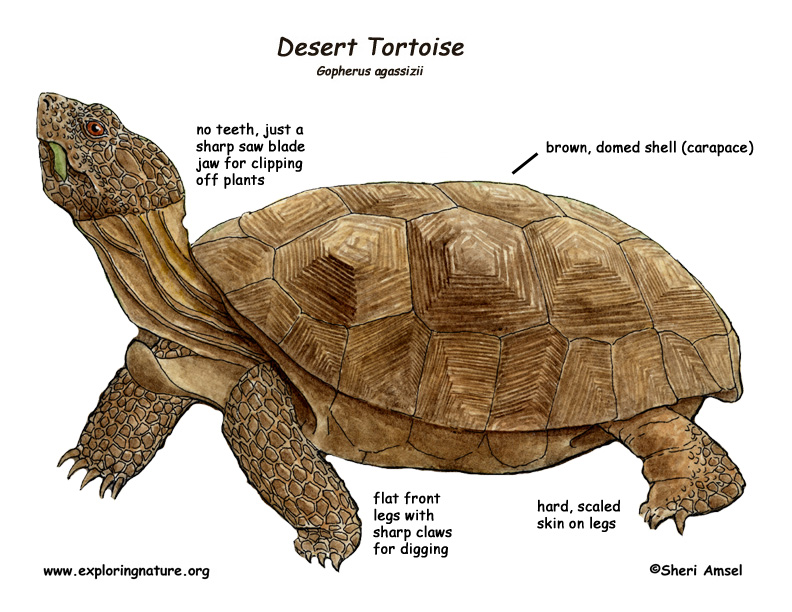

They are found in the Mojave and Sonoran deserts of southeastern California, southern Nevada, south through Arizona and into Mexico.
They live in the desert.
They are 9 - 15 inches long and can weigh 8 - 15 pounds. They have flat front legs made for digging and a brown shell (carapace). They can pull their head and legs in toward the shell for protection (retraction).
Males will fight when they meet. They spend most of their lives in burrows underground when it is too hot (or cold) to be outside. They can live for 80-100 years.
They eat plants: grasses and wildflowers.
Their only predator is man collecting them, but loss of habitat from animals grazing also has an effect on them.
Females lay 4 – 8 white, hard-shelled eggs in the spring to early summer in a nest they dig near their burrow under a bush. Larger females lay more eggs than smaller females and have several egg-layings (clutches) in a season. Babies hatch in 3 – 4 months.
Kingdom: Animalia
Phylum: Chordata
Subphylum: Vertebrata
Class: Reptilia
Order: Testudines
Family: Testudinidae
Genus: Gopherus
Species: G. agassizii
When you research information you must cite the reference. Citing for websites is different from citing from books, magazines and periodicals. The style of citing shown here is from the MLA Style Citations (Modern Language Association).
When citing a WEBSITE the general format is as follows.
Author Last Name, First Name(s). "Title: Subtitle of Part of Web Page, if appropriate." Title: Subtitle: Section of Page if appropriate. Sponsoring/Publishing Agency, If Given. Additional significant descriptive information. Date of Electronic Publication or other Date, such as Last Updated. Day Month Year of access < URL >.
Amsel, Sheri. "Tortoise (Desert)" Exploring Nature Educational Resource ©2005-2024. March 25, 2024
< http://www.exploringnature.org/db/view/520 >

